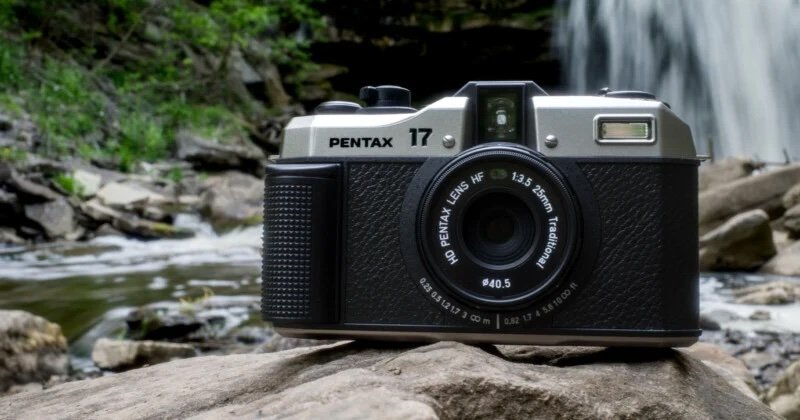Where Can I get Half Frame Film Developed?
The film photography world was ecstatic yesterday as Pentax announced their new film camera, the Pentax 17. It’s been so long since a new, high quality film camera was released, photographers all around the world rejoiced with the announcement. There was one small detail however, the Pentax 17 is a half-frame 35mm camera…
What is a Half Frame 35mm Camera?
A half-frame 35mm camera is unique as it only uses half of the traditional 35mm frame. So you actually get two pictures for every one frame. If you have a 24 exposure roll, you’re gonna get 48 pictures. If you have a 36 exposure roll, you get 72. With the rising prices of film and everything else rapidly inflating in price right now, more pictures for the same money is definitely a good thing!
Essentially, half-frame 35mm film cameras function just like a full-frame 35mm, except that the images that it takes are portrait aspect rather than landscape. To get a landscape image, you will need to rotate your camera 90 degrees. The view finder matches the framing of the camera so you can see exactly what you are getting, but it is a difference that takes some photographers a little bit to get used to.
There are currently a lot of new half-frame cameras on the market. The Kodak Ektar H35 is probably the most popular. But all of these half frame offerings, including the Kodak H35, are very cheaply made cameras offering similar quality to a disposable camera. Plastic lenses, fixed focus (or focus-free camera), fixed aperture all adds up to a very limited point and shoot experience. While these cameras are adequate, we develop a lot of film shot through these cameras and we can tell that there is definitely a lack in quality. Soft focus along the edges, chromatic aberation, and slow shutter speeds really hurt the quality of these cameras. This new Pentax 17 brings a significantly higher level of quality to the half-frame 35mm world and with it’s afford $499 purchase price, hopefully this camera will serve as a gateway for many amateur film photographers to step up into a much better camera.
How is Half-Frame 35mm Film Developed?
There is no difference in how you develop half-frame 35mm film. The film is developed according to its prescribed process (c41 for color negative, E6 for slide, etc). Since all of the film is ran through the developing chemicals, the size of the frame has no effect on the developing process. Where the process does differ is the scanning process. Not every scanner can accommodate the half-frame 35mm format. Some labs will scan two half-frame pictures at once. Some will just refuse to scan the film all together. For most photo labs, developing 35mm half-frame film is a huge pain as it disrupts the normal 35mm workflow.
If you’re developing your own 35mm film at home and scanning yourself, then you will definitely need to make adjustments in your scanning workflow. If you’re using a flatbed scanner, make sure you’re using a software that will allow you to adjust the scanning frame so that you can accommodate the smaller frames. If you’re DSLR scanning your film, I currently do not know of a 35mm half frame mask that exists, so you will have to take pictures of two frames at once and edit in Lightroom or photoshop to separate the frames.
Regardless of who scans your film, be aware that the smaller frame size will mean a reduced image size.
Where can I get half-frame 35mm film developed?
As we started above, every lab can develop it, but not every lab can or will scan it. If you’re sending in half-frame 35, make sure and check with the lab first. Check their FAQ’s or just shoot them an email or stop by and ask. You will run into one of four possibilities.
They will develop and scan your half-frame 35mm film at no extra charge
They will develop and scan your half-frame 35mm film with an additional charge.
They will develop your film and return your negatives for your to scan yourself.
They will refuse to even develop your film.
If you’re investing in a 35mm half-frame camera, then you definitely need to find a location that willl process your film for minimal or no extra cost. Here’s a quick guide to some of the main labs out there and their half-frame scanning offerings:
Walmart - Develops but will not scan
CVS - Develops but will not scan
Walgreens - Develops but will not scan
Shutter Junkies - Develops and scans at no extra charge
The Darkroom - Develops and scans for $6 extra
Reformed Film Lab - Develops and scans at no extra charge


